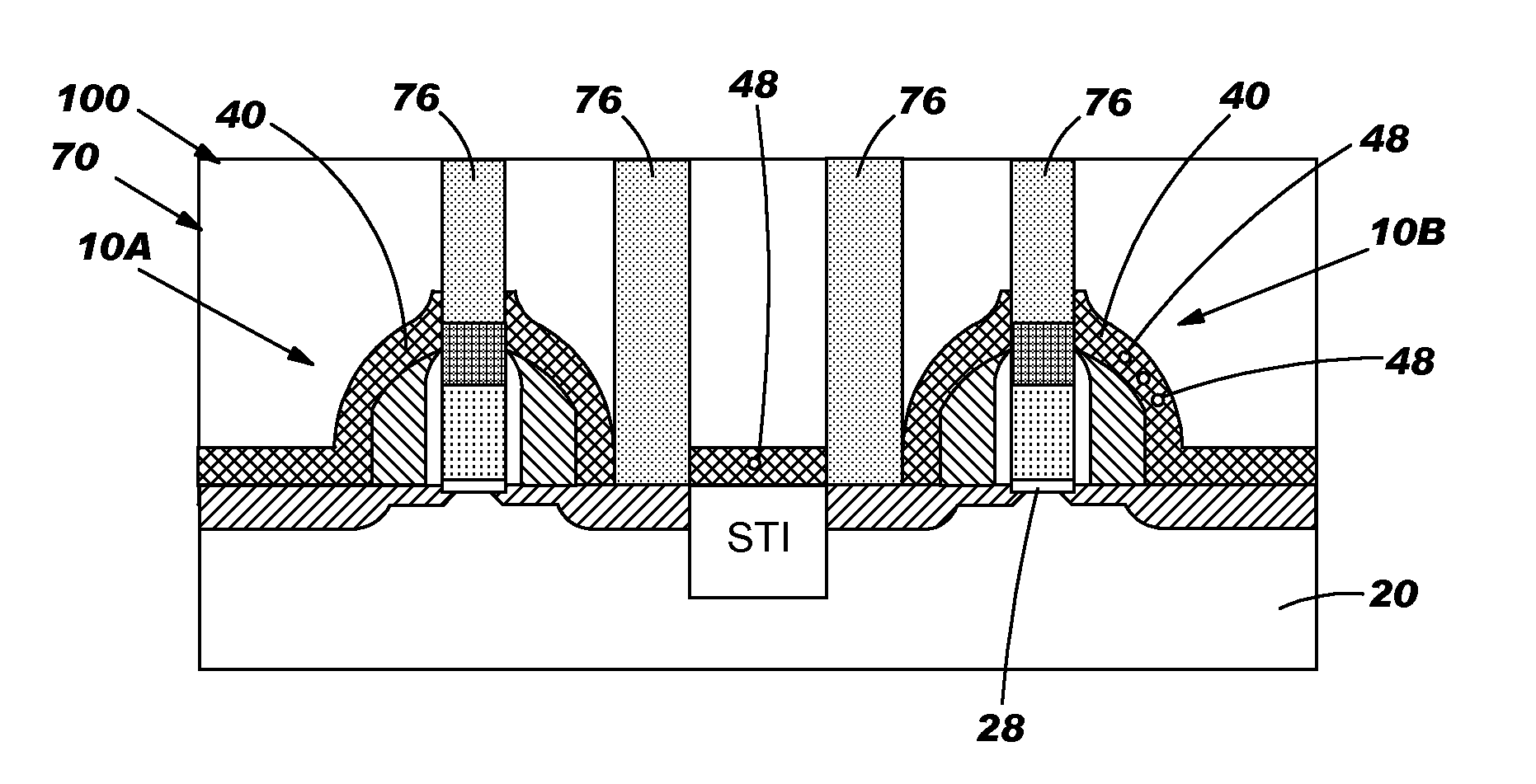Hot carrier degradation reduction using ion implantation of silicon nitride layer
a technology of silicon nitride and hot carrier, which is applied in the direction of semiconductor devices, electrical apparatus, transistors, etc., can solve the problems of device degradation, enhanced substrate, and trapped gate oxide, and achieve the effect of reducing hot carrier degradation
- Summary
- Abstract
- Description
- Claims
- Application Information
AI Technical Summary
Benefits of technology
Problems solved by technology
Method used
Image
Examples
Embodiment Construction
[0017]With reference to the accompanying drawings, FIGS. 1-5 show a method of reducing hot carrier degradation in a transistor device according to the invention. As shown in FIG. 1, an initial structure includes at least one transistor device 10A, 10B including, for example, a gate 12, surrounded by an inner 14 and outer spacer 16, and a source / drain region 18 positioned within a substrate 20. Substrate 20 also includes a shallow trench isolation (STI) 22 to separate different transistor devices 10. Gate 12 includes a silicide cap 24, a polysilicon body 26 and a gate silicon dioxide region 28 (hereinafter “gate oxide”). Each gate 12 is positioned over a channel region 30. As illustrated, transistor device 10A is a p-type field effect transistor (pFET) and transistor device 10B is an n-type field effect transistor (nFET), however, transistor devices 10A, 10B can be any type transistor device.
[0018]FIG. 2 illustrates a first step of one embodiment of a method of reducing hot carrier d...
PUM
| Property | Measurement | Unit |
|---|---|---|
| temperature | aaaaa | aaaaa |
| temperature | aaaaa | aaaaa |
| temperature | aaaaa | aaaaa |
Abstract
Description
Claims
Application Information
 Login to View More
Login to View More - R&D
- Intellectual Property
- Life Sciences
- Materials
- Tech Scout
- Unparalleled Data Quality
- Higher Quality Content
- 60% Fewer Hallucinations
Browse by: Latest US Patents, China's latest patents, Technical Efficacy Thesaurus, Application Domain, Technology Topic, Popular Technical Reports.
© 2025 PatSnap. All rights reserved.Legal|Privacy policy|Modern Slavery Act Transparency Statement|Sitemap|About US| Contact US: help@patsnap.com



